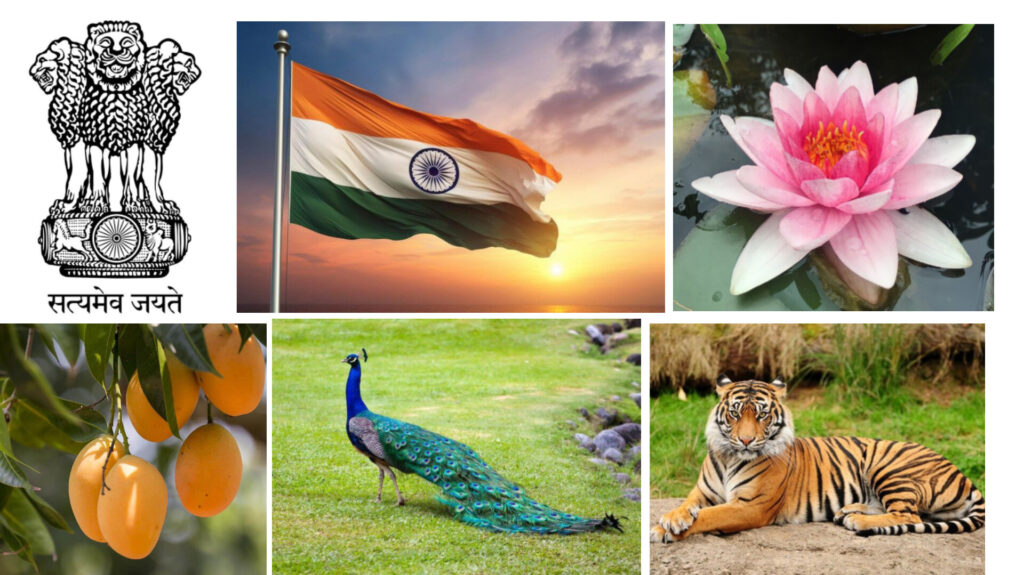India has a rich tapestry of national symbols that reflect its cultural heritage , natural beauty and historical significance .India has several national symbols that represent its rich cultural heritage, unity, and pride. Here’s a list of some prominent national symbols of India:
1. Symbols of India – National Flag
- Name: Tiranga (Tricolor)
- Design: Three horizontal stripes of saffron (top), white (middle), and green (bottom) with a navy-blue Ashoka Chakra (wheel with 24 spokes) in the center.
- Significance: Saffron represents courage and sacrifice, white represents truth and peace, and green symbolizes growth and prosperity. The Ashoka Chakra represents the eternal wheel of law.
2. National Emblem – Symbols of India
- Inspiration: Adapted from the Lion Capital of Ashoka at Sarnath.
- Design: Four Asiatic lions standing back-to-back, but only three are visible. Below the lions is a wheel (Ashoka Chakra) with a bull on one side and a horse on the other.
- Motto: “Satyameva Jayate” (Truth Alone Triumphs), inscribed below in Devanagari script.
3. National Anthem– Symbols of India
- Song: “Jana Gana Mana”
- Composer: Rabindranath Tagore
- Significance: The anthem celebrates the unity, diversity, and integrity of India.
4. National Song – symbols of india
- Song: “Vande Mataram”
- Composer: Bankim Chandra Chatterjee
- Significance: It was an inspiration for freedom fighters during the independence movement and praises the beauty and greatness of India.

5. National Animal
- Animal: Bengal Tiger
- Significance: Represents strength, grace, and power. The Bengal Tiger is also a symbol of the country’s wildlife heritage.
6. National Bird
- Bird: Indian Peacock
- Significance: Known for its vibrant colors and graceful dance, the peacock symbolizes beauty and elegance.
7. National Flower
- Flower: Lotus
- Significance: The lotus represents purity, spirituality, and resilience as it blooms in muddy waters yet remains beautiful and untouched by its surroundings.
8. National Tree
- Tree: Indian Banyan (Ficus benghalensis)
- Significance: Symbolizes longevity, strength, and unity as it provides shade and sustenance to countless organisms.
9. National Fruit
- Fruit: Mango
- Significance: Known as the “King of Fruits,” the mango represents the diverse tropical flora of India and is cherished for its sweetness and flavor.
10. National River
- River: Ganga (Ganges)
- Significance: Revered as a sacred river, the Ganges is considered a symbol of purity and sustenance in Indian culture.
11. National Aquatic Animal
- Animal: Ganges River Dolphin
- Significance: Found in the Ganges and Brahmaputra rivers, this endangered dolphin represents India’s aquatic biodiversity.
12. National Currency Symbol
- Symbol: ₹ (Indian Rupee)
- Significance: The symbol reflects India’s economic identity and incorporates both the Devanagari and Latin scripts.
13. National Reptile
- Reptile: King Cobra
- Significance: Known for its intelligence and fearlessness, the King Cobra is revered in Indian culture and mythology.
https://infomate.in/blossoms-of-india-a-guide-to-state-flowers-across-the-nation/
These national symbols collectively represent India’s identity , cultural richness and natural heritage, each holding a special place in the hearts of its people.